Dalian Maritime University (formerly Dalian Maritime College) is a national key university directly under the Ministry of Transport. It is one of the first batch of universities included in the national "211 Project" and "Double First-Class" construction. It is a university jointly established by the Ministry of Transport, the Ministry of Education, the People's Government of Liaoning Province, and the People's Government of Dalian City. The school originated from the Ship Administration Department of the Shanghai Higher Industrial School of the Ministry of Posts and Communications established in 1909. In 1911, Tang Wenzhi founded the Shanghai Higher Commercial Marine School of the Ministry of Posts and Communications based on the Ship Administration Department. In 1912, it was renamed Wusong Merchant Marine School. It was closed in 1915. After reopening in 1929, it was renamed Wusong Merchant Marine College of the Ministry of Transport. It was closed again in 1937. In 1939, it was reopened in Chongqing and renamed National Chongqing Merchant Marine College. In 1943, it was merged into the National Jiaotong University in Chongqing. In 1946, it was reopened in Shanghai and renamed National Wusong Merchant Marine College. In 1950, it merged with the Department of Maritime Management of Jiaotong University to form Shanghai Maritime College. In 1953, the Central People's Government decided to merge Shanghai Navigation College with Northeast Navigation College, which originated from Northeast Merchant Marine School in 1927, to form Dalian Maritime College. In the same year, Fujian Navigation College, which originated from the Fisheries Department of Jimei School in 1920, was incorporated. In 1960, the school was identified as a national key university. In 1963, the State Council approved the implementation of semi-military management of the school's navigation majors. In 1983, the United Nations Development Program (UNDP) and the International Maritime Organization (IMO) established the Asia-Pacific International Maritime Training Center in the school. In 1985, the World Maritime University established a branch in the school. In 1994, the school was renamed Dalian Maritime University. In 1997, the school became a key university in the national "211 Project". In 1998, the school's quality management system was certified by the State Harbor Supervision Bureau (now the Maritime Safety Administration of the Ministry of Transport) and the Norwegian Classification Society (DNV), becoming the first university in China to introduce the ISO9001 quality management system into talent training quality management. In 2017, the school was selected as a national "double first-class" construction university. The school's development history represents the development of China's higher maritime education. The school was founded when the nation suffered from foreign humiliation and national fortune declined, and shouldered the historical mission of "saving navigation rights and revitalizing national fortune". Although it has gone through twists and turns and hardships, it has always been passed on from generation to generation and continued to develop. It has cultivated a large number of pillars of the shipping industry and made important contributions to the revitalization and development of the country's shipping industry. It is known as the "cradle of navigators". The achievements of the school and its reputation at home and abroad have been fully affirmed and highly praised by the central leadership. In 1993, Jiang Zemin, Wen Jiabao, Zeng Qinghong, Li Lanqing and other party and state leaders successively visited Dalian Maritime University. Comrade Jiang Zemin personally wrote the inscription for the school: "Be firm, rigorous, diligent, pioneering, and build a world-class higher maritime institution!" In 2009, the school successfully held the "China Higher Maritime Education and Dalian Maritime University 100th Anniversary" commemorative activities. Li Changchun, Zhang Dejiang, Liu Yandong, Chen Zhili and other party and state leaders sent letters or inscriptions to congratulate the school. Liu Yandong, Chen Zhili and other party and state leaders visited the school respectively. The school is located in the southwest of Dalian, a famous coastal city in northern China. The school covers an area of 1.4426 million square meters, with a school building area of 97.240,000 square meters. The school has a group of teaching and experimental buildings with complete facilities and functions for maritime majors, a maritime training and engineering practice center, a water survival training hall, a teaching harbor, a library, a swimming pool, a planetarium, etc.; it has more than 100 teaching and research laboratories such as a navigation simulation laboratory and a marine engine simulation laboratory, and has 2 ocean-going teaching practice ships. The school currently has a School of Navigation, a School of Marine Engineering, a School of Marine Electrical Engineering, a School of Information Science and Technology, a School of Transportation Engineering, a School of Shipping Economics and Management, a School of Naval and Ocean Engineering, a School of Environmental Science and Engineering, a School of Artificial Intelligence, a School of Law, a School of Foreign Languages, a School of Public Administration and Humanities and Arts, a School of Marxism, a School of Science, an International Joint College, a Department of Sports, a School of Innovation and Entrepreneurship, a School of Continuing Education (School of Advanced Transportation Studies), a Center for Navigation Training and Engineering Practice, a Humanities and Social Sciences Research Institute (Shipping Development Research Institute), and a Center for International Students Education, etc. There are more than 20,000 undergraduate and graduate students in the school, and foreign students studying for bachelor's, master's and doctoral degrees are also enrolled. Over the past 70 years since the merger, the university has been committed to cultivating high-quality professionals with patriotism, global vision, comprehensive qualities, and innovative capabilities. It has trained more than 100,000 senior professional and technical personnel of various types for the country, most of whom have become the backbone of my country's shipping industry. The university has 54 undergraduate majors, 19 national first-class professional construction sites, 5 engineering education professional certification (international mutual recognition) majors, 2 British Marine Engineers and Maritime Science and Technology Society certification (international regional certification) majors, 29 national first-class undergraduate courses, 6 boutique online open courses, 5 virtual simulation experimental teaching projects, 2 national curriculum ideological and political demonstration courses (undergraduate), 1 national advanced collective for textbook construction, 3 national experimental teaching demonstration centers, 1 national virtual simulation experimental teaching center, 6 national teaching achievement awards for higher education, 6 national new engineering research and practice projects, 3 national virtual teaching and research rooms, 1 national There are 6 national new liberal arts research and reform practice projects, 1 national "Ten Thousand Talents Plan" teaching master, 40 provincial first-class professional construction sites (including national level), 233 provincial first-class undergraduate courses, 39 high-quality online open courses, 32 virtual simulation experimental teaching projects, 15 excellent textbooks in Liaoning Province, 1 provincial strategic emerging field "14th Five-Year Plan" higher education textbook construction team, 13 provincial experimental teaching demonstration centers, 4 provincial virtual simulation experimental teaching centers, 49 provincial teaching masters, 1 "Xingliao Talent Plan" teaching master, 8 provincial virtual teaching and research offices, and 3 provincial modern industrial colleges. Up to now, the school has 9 first-level doctoral degree-granting disciplines, 22 first-level master's degree-granting disciplines, 7 postdoctoral mobile stations, 14 master's professional degree-granting categories, and 3 interdisciplinary disciplines. The discipline layout covers 7 major disciplines, including philosophy, economics, law, literature, science, engineering, and management. The discipline of transportation engineering has been selected into the national "Double First-Class" construction list, and there are 4 first-class disciplines in Liaoning Province, including transportation engineering, ship and ocean engineering, computer science and technology, and environmental science and engineering. The school takes the development of discipline connotation as the main line, adheres to the "first-class traction, strengthening characteristics, consolidating the foundation, and cross-cutting breakthroughs", focuses on the discipline field of marine transportation engineering, and focuses on six major directions, including marine transportation safety and security technology, efficient marine logistics system and operation management technology, ship pollution prevention and control and energy-saving technology, intelligent ship development and application technology, submarine engineering technology and equipment, and international maritime rules and maritime law innovation, to strengthen the construction of engineering, information, and humanities and social sciences disciplines. Disciplines such as engineering, computer science, general social sciences, environment/ecology, materials science, and chemistry have entered the top 1% of ESI worldwide. The school continues to optimize the layout of the "national-provincial-school-level" three-level scientific research platform system, and has now formed a cluster of well-equipped, open and shared high-level scientific research bases. So far, the school has 1 national key laboratory, 2 national engineering research centers, 2 national international science and technology cooperation bases, 3 national discipline innovation and intelligence introduction bases, 1 national collaborative innovation center, 1 national innovative talent training demonstration base, 1 national popular science education base, 60 provincial and ministerial key scientific research platforms and bases, and 35 municipal key scientific research platforms and bases. In accordance with the working idea of "building platforms, building teams, cultivating talents, and producing results", the school continues to innovate the scientific research organization model, strives to improve the level of scientific research services, and vigorously enhances the school's scientific and technological innovation capabilities. It fully injects strong power into the engine of our school's "double first-class" construction and the construction of a research-based world-class maritime university, and plays an important role in promoting transportation technology progress, serving the industry, and serving local economic construction. The school has a faculty team with good overall quality, reasonable hierarchical structure, and relatively stable. There are 1,658 full-time teachers, including 385 with senior professional and technical positions, 287 full-time doctoral supervisors, 47 second-level professors, 91 third-level professors, and a large number of outstanding young and middle-aged teachers have emerged. In the fields of marine traffic engineering, navigation information engineering, ship intelligence, ship power system and energy-saving technology, ship machinery repair engineering, communication and information system, marine environmental protection, maritime regulations system, etc., a group of well-known experts and professors with profound professional theories and strong scientific research capabilities, as well as young backbones with active academic thinking and innovative spirit have been gathered. The school has also hired 119 well-known experts and scholars from home and abroad in the form of specially appointed professors, lecture professors, and visiting professors, and regularly invites famous teachers to the school to carry out substantive work and exchanges, so that teachers and students can get close to the cutting-edge theories of various disciplines, further broaden their horizons, and liven up the academic atmosphere. The school attaches great importance to foreign exchanges and inter-school exchanges. Since the reform and opening up, it has formally established cooperative relations with 167 internationally renowned colleges and institutions in 46 countries and regions such as Russia, the United States, Canada, Japan, the United Kingdom, South Korea, Australia, Sweden, Egypt, Vietnam, and Sri Lanka, and has maintained substantive contacts in cooperative education, teacher-student exchanges, and cooperative scientific research. The scope of cooperation is constantly expanding. In March 2005, the "Master's Program in Maritime Safety and Environmental Management" jointly organized by the school and the World Maritime University enrolled students for the first time, further improving the school's international cooperation in running schools. The school established an overseas campus at the International Maritime Engineering College in Colombo, Sri Lanka, and began to enroll students in Sri Lanka in 2007, realizing the first export of my country's higher maritime education. The school also maintains long-term cooperative relations with many international organizations and institutions, including: International Maritime Organization (IMO), International Labor Organization (ILO), International Association of Maritime Universities (IAMU), Global Maritime Training Association (GlobalMET), International Maritime Teachers Association (IMLA), Asia-Pacific Economic Cooperation (APEC), Association of Southeast Asian Nations (ASEAN), International Chamber of Shipping (ISF), International Association of Classification Societies (IACS), Baltic Maritime Council (BIMCO), Lloyd's Register, and Nippon Yusen Kaisha (NYK) and other world-renowned shipping companies. The school also actively carries out educational innovation, continuously broadens the channels for running schools, and introduces educational resources. With the care and support of the Ministry of Transport, relevant ministries and local governments, Dalian Maritime University will always bear in mind its mission and responsibility, be based on maritime affairs, serve transportation, face the ocean, practice the school motto of "learning from all rivers, virtue from all seas", inherit the spirit of "firmness, rigor, diligence, and pioneering", carry forward the tradition of "being in the same boat, arduous and arduous, scientific navigation, and patriotism", and be committed to leading maritime education and promoting transportation development. With the mission of "cultivating industry elites and social pillars, serving the construction of a strong transportation and maritime country", we will strive towards the goal of building a world-class research-based maritime university!Register) and Nippon Yusen (NYK) and other world-renowned shipping companies. The school also actively carries out educational innovation, continuously broadens the channels for running schools, and introduces educational resources. After more than a hundred years of wind and rain, the fragrance of peaches and plums continues the glorious chapter. With the care and support of the Ministry of Transport and relevant ministries and local governments, Dalian Maritime University will always bear in mind its mission and responsibility, base itself on maritime affairs, serve transportation, face the ocean, practice the school motto of "learning from a hundred rivers, virtue benefiting the world", inherit the spirit of "firmness, rigor, diligence, and pioneering" of the Ocean University, carry forward the tradition of "being in the same boat, arduous and arduous, scientific navigation, and patriotism as the root", and is committed to leading maritime education and promoting transportation development. With the mission of "cultivating industry elites and social pillars, serving the construction of a strong transportation country and a strong ocean country", we will strive towards the goal of building a world-class research-based maritime university!Register) and Nippon Yusen (NYK) and other world-renowned shipping companies. The school also actively carries out educational innovation, continuously broadens the channels for running schools, and introduces educational resources. After more than a hundred years of wind and rain, the fragrance of peaches and plums continues the glorious chapter. With the care and support of the Ministry of Transport and relevant ministries and local governments, Dalian Maritime University will always bear in mind its mission and responsibility, base itself on maritime affairs, serve transportation, face the ocean, practice the school motto of "learning from a hundred rivers, virtue benefiting the world", inherit the spirit of "firmness, rigor, diligence, and pioneering" of the Ocean University, carry forward the tradition of "being in the same boat, arduous and arduous, scientific navigation, and patriotism as the root", and is committed to leading maritime education and promoting transportation development. With the mission of "cultivating industry elites and social pillars, serving the construction of a strong transportation country and a strong ocean country", we will strive towards the goal of building a world-class research-based maritime university!
-

Tsinghua University
-

Peking University
-

Fudan University
-

Wuhan University
-

Zhejiang University
-

Nanjing University
-

Sun Yat-sen University
-

Tongji University
-

Renmin University of China
-

Jahrom University of Medical Sciences
-

Mesoamerican University
-

Istmo University
-
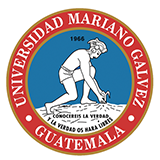
Mariano Galvez University of Guatemala
-
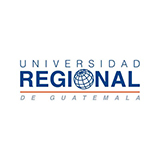
Regional University of Guatemala
-
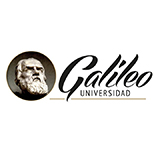
Galileo University
-
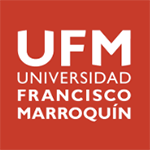
Francisco Marroquín University
-

Rafael Landívar University
-
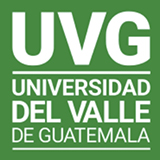
University of the Valley of Guatemala
-
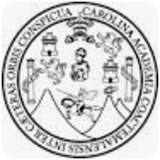
University of San Carlos of Guatemala
-

Technological Institute of Tlaxcala Plateau
-

Golfo University
-
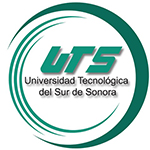
Technological University of South Sonora
-
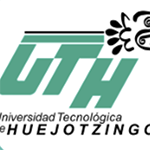
Technological University of Huejotzingo
-

Tizimín Institute of Technology
-
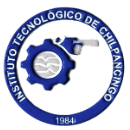
Chilpancingo Institute of Technology

